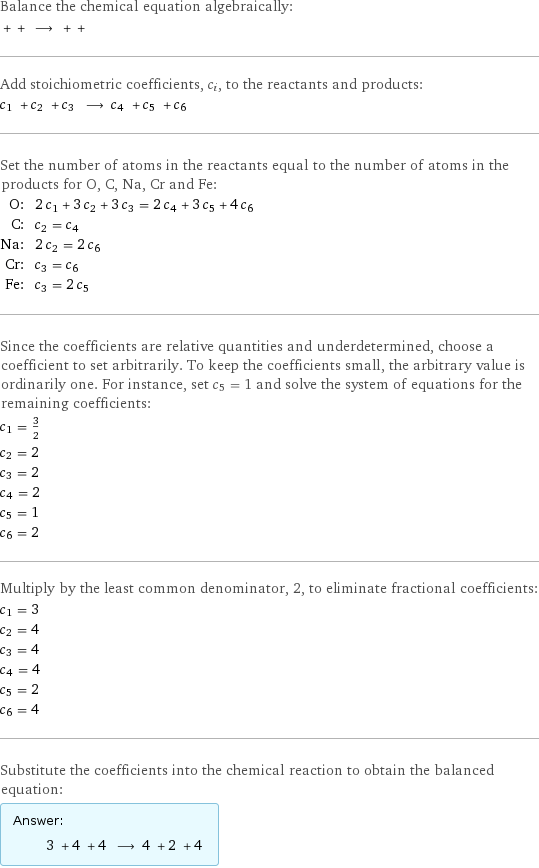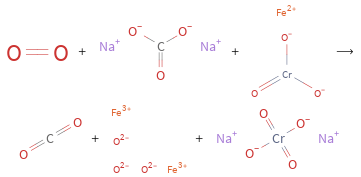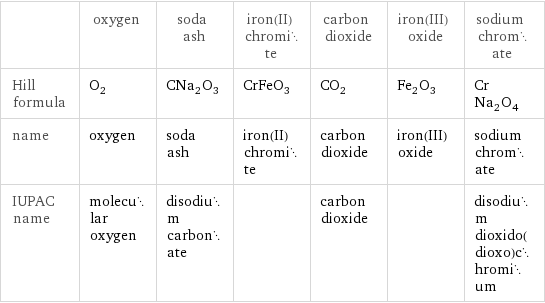Input interpretation

oxygen + soda ash + iron(II) chromite ⟶ carbon dioxide + iron(III) oxide + sodium chromate
Balanced equation

Balance the chemical equation algebraically: + + ⟶ + + Add stoichiometric coefficients, c_i, to the reactants and products: c_1 + c_2 + c_3 ⟶ c_4 + c_5 + c_6 Set the number of atoms in the reactants equal to the number of atoms in the products for O, C, Na, Cr and Fe: O: | 2 c_1 + 3 c_2 + 3 c_3 = 2 c_4 + 3 c_5 + 4 c_6 C: | c_2 = c_4 Na: | 2 c_2 = 2 c_6 Cr: | c_3 = c_6 Fe: | c_3 = 2 c_5 Since the coefficients are relative quantities and underdetermined, choose a coefficient to set arbitrarily. To keep the coefficients small, the arbitrary value is ordinarily one. For instance, set c_5 = 1 and solve the system of equations for the remaining coefficients: c_1 = 3/2 c_2 = 2 c_3 = 2 c_4 = 2 c_5 = 1 c_6 = 2 Multiply by the least common denominator, 2, to eliminate fractional coefficients: c_1 = 3 c_2 = 4 c_3 = 4 c_4 = 4 c_5 = 2 c_6 = 4 Substitute the coefficients into the chemical reaction to obtain the balanced equation: Answer: | | 3 + 4 + 4 ⟶ 4 + 2 + 4
Structures

+ + ⟶ + +
Names

oxygen + soda ash + iron(II) chromite ⟶ carbon dioxide + iron(III) oxide + sodium chromate
Chemical names and formulas

| oxygen | soda ash | iron(II) chromite | carbon dioxide | iron(III) oxide | sodium chromate Hill formula | O_2 | CNa_2O_3 | CrFeO_3 | CO_2 | Fe_2O_3 | CrNa_2O_4 name | oxygen | soda ash | iron(II) chromite | carbon dioxide | iron(III) oxide | sodium chromate IUPAC name | molecular oxygen | disodium carbonate | | carbon dioxide | | disodium dioxido(dioxo)chromium